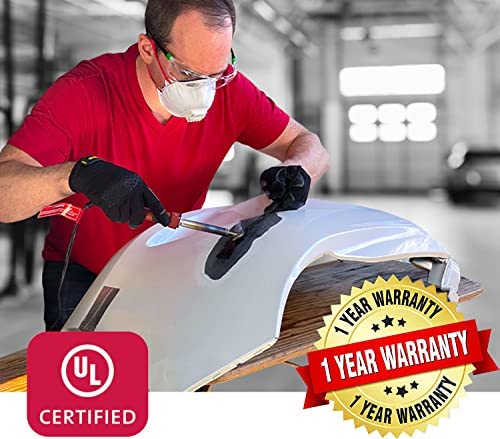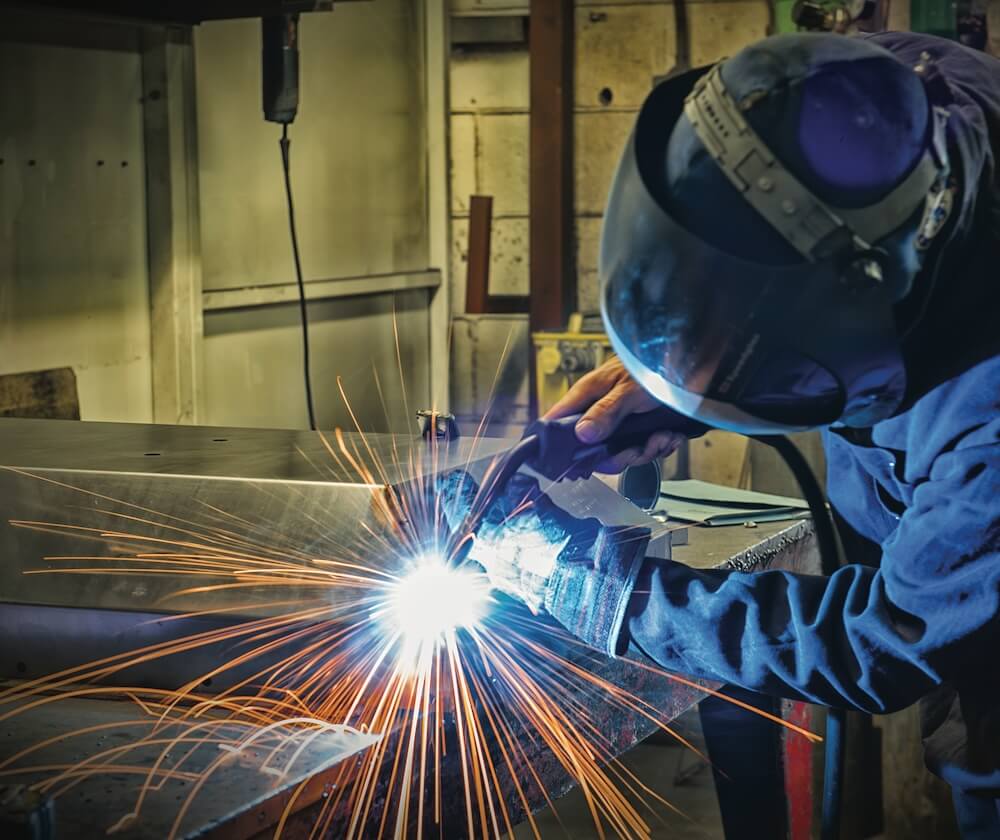Common Welding Repair Service Issues and Exactly How to Address Them Effectively
Welding repair services typically come across a series of concerns that can jeopardize the integrity of the final item. Typical issues consist of poor infiltration, porosity, and imbalance, among others. Each issue presents special difficulties that call for specific methods for resolution. Understanding these issues is essential for welders intending to boost their end results and skills. This conversation will certainly check out these typical welding fixing concerns and reliable approaches to address them.
Poor Infiltration
Inadequate infiltration takes place when the weld steel fails to completely fuse with the base product, causing weak joints and possible architectural failures. This concern commonly originates from inadequate heat input, wrong electrode angle, or improper welding speed. Welders might come across inadequate penetration because of a mistake of the essential criteria for a certain material density or type. Additionally, contamination on the base product's surface can prevent efficient bonding, worsening the problem. To resolve poor penetration, welders must ensure proper settings on their tools and preserve a tidy work surface. Normal examination of welds is suggested to determine any type of deficiencies early, enabling prompt adjustments and the prevention of compromised architectural honesty in bonded settings up.
Porosity
Porosity is a typical problem in welded joints that manifests as little gas bubbles entraped within the weld metal. This issue can compromise the integrity of the weld, leading to minimized stamina and potential failure under stress. Belgrade. Porosity typically arises from contamination, wetness, or inappropriate welding strategies, which permit gases to get away right into the liquified weld pool. To attend to porosity, welders need to assure appropriate surface preparation, maintain a clean workplace, and utilize appropriate welding specifications. Additionally, picking the best filler product and protecting gas can alleviate gas entrapment. Normal assessment and screening of welds can assist identify porosity early, assuring timely corrective activities are taken, thus preserving the top quality and integrity of the bonded structure
Imbalance
Imbalance in welding can emerge from various variables, including inappropriate configuration and thermal expansion. Comprehending the origin triggers is vital for efficient resolution. Numerous modification strategies are readily available to realign elements and guarantee structural integrity.
Root causes of Imbalance
Welding imbalance often comes from a variety of underlying concerns that can endanger architectural stability. One main reason is improper fit-up of components prior to welding, which can result in voids and unequal surfaces. Variations in thermal development during the welding procedure can also cause distortion, particularly if the products being signed up with have different coefficients of growth. Additionally, poor securing and fixturing may stop working to hold elements firmly in position, bring about motion during welding. Inadequately maintained tools, consisting of welding machines and devices, may present inconsistencies in the weld grain, more contributing to imbalance. Ultimately, operator mistake, coming from not enough training or experience, can also play a considerable role in creating misaligned welds.
Adjustment Techniques Readily Available
Attending to imbalance successfully requires a combination of restorative strategies tailored to the certain concerns available. One usual method is the usage of jigs or fixtures to hold components in the appropriate position during welding, ensuring constant placement. Furthermore, pre-heating the materials can assist reduce distortion and boost fit-up. For considerable misalignment, mechanical adjustment strategies, such as utilizing hydraulic jacks or clamps, can be utilized to correct the setting before welding. Post-weld warmth treatment might additionally be required to eliminate stress and anxieties triggered by imbalance. Careful assessment and modification throughout the configuration phase can protect against imbalance issues from becoming significant issues, advertising a smoother welding procedure and improving overall structural honesty.
Distortion
Distortion is a common difficulty in welding that can emerge from different elements, consisting of irregular heating & cooling. Comprehending the sources of distortion is essential for executing efficient prevention methods. Resolving this problem not only boosts architectural honesty yet likewise enhances the total top quality of the weld.
Reasons for Distortion
When based on the intense warmth of welding, products usually undertake adjustments that can result in distortion. This sensation primarily emerges from thermal development and tightening throughout the welding process. As the weld location warms up, the product broadens; upon air conditioning, it contracts, which can create inner stresses. In addition, unequal heating throughout a workpiece can intensify these anxieties, causing warping or bending. The type of product additionally plays a considerable function; steels with varying thermal conductivity and coefficients of growth might respond differently, causing continue reading this unpredictable distortions. Additionally, inadequate joint layout and insufficient fixturing can add to imbalance during welding, raising the chance of distortion. Recognizing these reasons is necessary for reliable welding repair work and avoidance approaches.
Avoidance Techniques
Reliable prevention methods for distortion throughout welding emphasis on managing warmth input and making certain correct joint design. Keeping a constant warmth input helps to decrease thermal growth and tightening, which can cause distortion. Utilizing strategies such as pre-heating the work surface can additionally minimize the temperature level slope, promoting uniform home heating. In addition, choosing suitable joint styles, such as T-joints or lap joints, can enhance security and lower anxiety concentrations. Executing proper fixturing to safeguard the work surfaces in location further help in preserving alignment during the welding procedure. Staggered welding series can disperse heat extra evenly, avoiding localized distortion. By using these approaches, welders can significantly reduce the probability of distortion and enhance the overall quality of their welds.
Cracking
Breaking is a common issue come across in welding repairs, often arising from different variables such as inappropriate cooling prices, material selection, or inadequate joint prep work. The occurrence of fractures can substantially jeopardize the integrity of the weld, leading to possible failings throughout operation. To resolve this problem, welders have to initially examine the root causes, making certain that products are compatible and suitably chosen for the certain application. Additionally, controlling the air conditioning rate throughout the welding process is essential; rapid air conditioning can induce tension and bring about fracturing. Appropriate joint layout and preparation also add to reducing the danger. Executing these approaches can improve weld high quality and sturdiness, inevitably minimizing the possibility of splitting in ended up weldments.

Insufficient Fusion
A considerable issue in welding repairs is insufficient combination, which takes place when the weld steel does not adequately bond with the base product or previous weld passes - Belgrade. This problem can bring about weak points in the joint, potentially compromising the honesty of the welded structure. you could check here Variables adding to incomplete blend include insufficient warmth input, inappropriate welding strategy, and contamination of the surfaces being signed up with. To address this issue efficiently, welders ought to assure appropriate pre-weld cleansing and surface prep work, as well as adjust their welding specifications to achieve ample infiltration and fusion. Routine assessment throughout the welding procedure can additionally help identify incomplete blend early, enabling timely restorative steps to boost the total top quality of the weld
Overheating
While welding repair work can boost architectural honesty, overheating presents a substantial obstacle that can bring about material degradation. Too much warm throughout welding can alter the mechanical residential or commercial properties of metals, resulting in reduced toughness, enhanced brittleness, and bending. This sensation is particularly critical in high-stress applications where structural integrity is vital. Identifying getting too hot can include aesthetic inspections for staining or distortion, along with keeping track of temperature throughout the welding process. To minimize the threats connected with overheating, welders must utilize suitable techniques, such as managing warm input, adjusting traveling rate, and utilizing suitable filler products. In addition, implementing pre- and post-weld warmth treatments can help bring back product properties and enhance the general quality of the repair service, guaranteeing long-term performance and security.
Frequently Asked Concerns
What Are the Common Indicators of a Welding Flaw?

How Can I Examine My Welds for Top quality?
To check welds for high quality, one can utilize visual inspections, ultrasonic screening, and radiographic techniques. Each method assures structural stability, identifies problems, and validates adherence to defined criteria, eventually enhancing the integrity of the bonded joints.
What Security Safety Measures Should I Take While Welding?
When welding, one must prioritize security by using proper individual protective tools, guaranteeing appropriate air flow, protecting flammable products away, keeping a clean work area, and understanding surroundings to avoid injuries and crashes.
Can I Fix a Weld Without Redesigning the Entire Joint?
Repairing a weld without redesigning the entire joint is feasible, relying on the read review damages (Belgrade Welding). Strategies such as grinding, including filler product, or utilizing a welding process can effectively deal with details flaws while maintaining the surrounding structure
What Devices Are Important for Effective Welding Repairs?
Necessary devices for reliable welding repair services include a welding equipment, cable brush, mill, safety equipment, clamps, and filler products. Each device plays an important role in making certain high quality and safety throughout the repair process. Porosity commonly arises from contamination, moisture, or improper welding methods, which enable gases to escape into the liquified weld pool. Improperly kept equipment, including welding equipments and devices, might present inconsistencies in the weld grain, additional contributing to imbalance. When subjected to the extreme warm of welding, materials often go through modifications that can lead to distortion. Fracturing is a typical issue experienced in welding repair work, frequently resulting from different aspects such as improper air conditioning rates, product option, or poor joint preparation. A significant issue in welding repair work is incomplete combination, which happens when the weld steel does not adequately bond with the base product or previous weld passes.